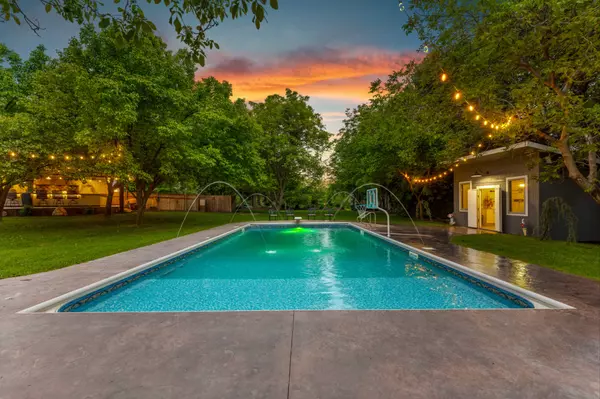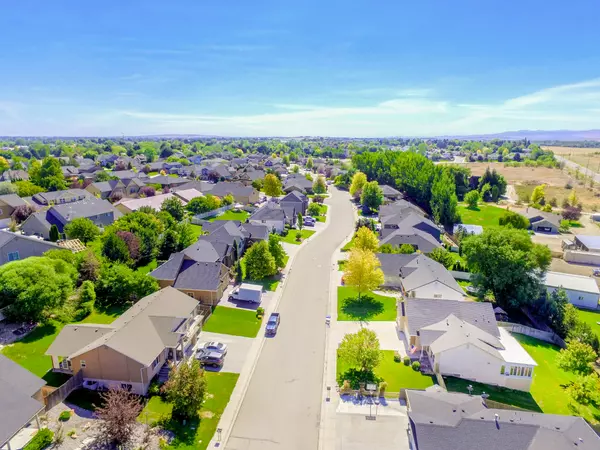How to Finance Your First Home Purchase | Idaho Real Estate Tips 2024

How to Finance Your First Home Purchase: A Step-by-Step Guide
Buying your first home is an exciting milestone, but navigating the world of home financing can be overwhelming. With the right knowledge and preparation, securing financing for your dream home becomes much easier. Whether you're just beginning your home search or already eyeing a few listings, understanding how to finance your first home purchase is crucial. In this guide, we’ll walk you through the key steps and strategies to make your home-buying journey a success.
Table of Contents:
- 1. Assess Your Financial Health
- 2. Understand Your Mortgage Options
- 3. Get Pre-Approved for a Mortgage
- 4. Save for a Down Payment
- 5. Calculate Your Budget
- 6. Choose the Right Lender
- 7. Understand Closing Costs
- 8. Finalize Your Mortgage and Close the Deal
1. Assess Your Financial Health
Before you even start shopping for homes, it’s essential to evaluate your financial situation. Lenders will closely examine your credit score, debt-to-income ratio, and savings to determine if you qualify for a mortgage. Here are the first steps to take:
- Check your credit score: A good credit score will help you secure better mortgage rates. If your score is low, take time to pay down debts and correct any errors on your credit report.
- Calculate your debt-to-income ratio (DTI): Your DTI compares your monthly debt payments to your gross income. A lower DTI (below 43%) will increase your chances of mortgage approval.
- Build your savings: You’ll need savings not only for your down payment but also for closing costs, moving expenses, and future home maintenance.
2. Understand Your Mortgage Options
There are many types of mortgages available, and choosing the right one depends on your financial situation and long-term goals. Here are the most common options:
- Conventional Loans: These are not backed by the government and usually require a higher credit score and down payment. However, they offer flexibility and lower overall costs for qualified borrowers.
- FHA Loans: Backed by the Federal Housing Administration, these loans are popular among first-time buyers because they have lower credit score requirements and allow for down payments as low as 3.5%.
- VA Loans: Available to veterans and active-duty service members, VA loans are backed by the Department of Veterans Affairs and often come with no down payment requirement.
- USDA Loans: These are government-backed loans for rural and suburban homebuyers, offering low-interest rates and no down payment for those who qualify.
It’s important to research each mortgage type to find which works best for your financial situation.
3. Get Pre-Approved for a Mortgage
Once you’ve assessed your finances and researched mortgage types, the next step is to get pre-approved for a mortgage. Pre-approval is an important step because it:
- Shows sellers you’re serious: In competitive markets, pre-approved buyers are more attractive to sellers.
- Helps you set a budget: Knowing the loan amount you qualify for will help you focus on homes within your price range.
To get pre-approved, you’ll need to submit documentation to a lender, including:
- Proof of income (W-2s, pay stubs, tax returns)
- Bank statements
- Debt information (car loans, student loans, etc.)
For personalized pre-approval assistance, consider reaching out to one of our trusted mortgage partners who can guide you through this process.

4. Save for a Down Payment
One of the biggest hurdles to buying your first home is saving for a down payment. The amount you'll need depends on the type of loan you choose. Here are some common down payment scenarios:
- Conventional loans typically require 5%-20% of the home’s purchase price.
- FHA loans require as little as 3.5%.
- VA and USDA loans often require no down payment.
Keep in mind that a larger down payment can lower your monthly payments and reduce your mortgage insurance costs. To estimate how much you need to save, use our mortgage calculator.
5. Calculate Your Budget
It’s essential to create a realistic home-buying budget before making an offer. Use our affordability calculator to determine how much home you can afford based on your income, debts, and savings. Consider these key factors when setting your budget:
- Monthly mortgage payment: This includes the loan principal, interest, taxes, and insurance.
- Utilities and home maintenance: New homeowners often overlook ongoing costs like heating, electricity, and repairs.
- Emergency fund: After you buy your home, it’s wise to have savings set aside for unexpected repairs or other financial challenges.
6. Choose the Right Lender
Not all lenders are created equal, so it’s essential to shop around. Look for lenders that offer competitive rates, flexible terms, and good customer service. Ask friends and family for recommendations, or visit our mortgage partners page to get started.
When comparing lenders, be sure to look at:
- Interest rates: A lower rate can save you thousands of dollars over the life of your loan.
- Fees: Lenders charge various fees (such as origination fees or application fees), so be sure to compare these.
- Customer service: Read reviews and ask about the lender’s communication style to make sure it fits your needs.
7. Understand Closing Costs
In addition to your down payment, you’ll need to budget for closing costs. These typically range from 2%-5% of the home’s purchase price and cover fees for the appraisal, title insurance, loan origination, and more. Common closing costs include:
- Loan origination fees: Charged by the lender for processing your loan.
- Title insurance: Protects you and your lender in case there are legal challenges to your ownership of the property.
- Appraisal fee: Covers the cost of having the property professionally appraised to determine its value.
It’s essential to factor these into your overall budget. You can estimate how much you’ll pay using our home sale calculator.
8. Finalize Your Mortgage and Close the Deal
Once your loan is approved, it’s time to finalize the details and close on your new home. This involves reviewing all the final documents, ensuring your down payment and closing costs are ready, and signing your mortgage agreement. After you sign the closing documents, you’ll receive the keys to your new home!
Remember, closing can take several weeks, so it’s important to stay in close communication with your lender and real estate agent throughout the process.

Final Thoughts
Financing your first home purchase might seem daunting, but with the right steps and careful planning, you can secure the best mortgage for your needs. From assessing your finances to closing the deal, taking a methodical approach will help you make informed decisions every step of the way. If you're ready to start your home search, visit Living in Idaho to view available homes for sale and begin your journey today!
FAQ
How much should I save for a down payment on my first home?
- A typical down payment for first-time buyers ranges from 3.5% to 20% of the home’s price, depending on the type of loan you choose.
What credit score do I need to qualify for a mortgage?
- For most conventional loans, you’ll need a credit score of at least 620. FHA loans may allow scores as low as 500with a larger down payment.
What are closing costs?
- Closing costs cover fees for services like the appraisal, loan origination, and title insurance. They usually range from 2% to 5% of the home’s purchase price.
Should I get pre-approved before house hunting?
- Yes! Pre-approval gives you a better understanding of how much you can afford and shows sellers that you're a serious buyer.
Categories
Recent Posts










Leave a Reply

